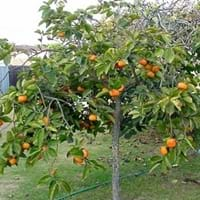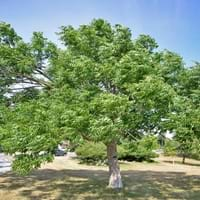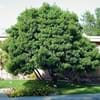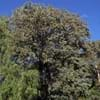Life Span
Perennial
Biennial
Origin
China, Japan
Central United States, Canada
Types
Not Available
Two-petal ash, Single-leaf ash, Fragrant ash
Number of Varieties
Not Available
Habitat
Subtropical climates, Warmer regions
Dry areas, Hills, limestone outcrops, Moist woods
USDA Hardiness Zone
6-10
4-8
Sunset Zone
H1, 6, 7, 8, 9, 12, 14, 15, 16, 18, 19, 20, 21, 22, 23, 24
2a, 2b, 3a, 3b, 4, 5, 6
Habit
Pyramidal
Upright/Erect
Flower Color
Light Yellow
Green, Purple
Flower Color Modifier
Bicolor
Bicolor
Fruit Color
Orange
Green, Tan
Leaf Color in Spring
Green
Green
Leaf Color in Summer
Green
Green
Leaf Color in Fall
Yellow, Burgundy, Orange Red
Yellow, Light Yellow
Leaf Color in Winter
Not Available
Not Available
Plant Season
Summer, Fall, Winter
Spring, Summer, Fall
Sunlight
Full Sun, Partial Sun
Full Sun
Type of Soil
Clay, Loam
Clay, Loam
The pH of Soil
Acidic, Neutral
Neutral, Alkaline
Soil Drainage
Well drained
Well drained
Tolerances
Not Available
Not Available
Where to Plant?
Ground
Ground
How to Plant?
Seedlings, Stem Planting
Seedlings, Transplanting
Plant Maintenance
Medium
Medium
Watering Requirements
Requires watering in the growing season, Water occasionally
Average Water Needs
In Summer
Lots of watering
Lots of watering
In Spring
Moderate
Moderate
In Winter
Average Water
Average Water
Soil pH
Acidic, Neutral
Neutral, Alkaline
Soil Type
Clay, Loam
Clay, Loam
Soil Drainage Capacity
Well drained
Well drained
Sun Exposure
Full Sun, Partial Sun
Full Sun
Pruning
Remove damaged leaves, Remove dead branches, Remove dead leaves, Requires very little pruning
Remove damaged leaves, Remove dead branches, Remove dead leaves
Fertilizers
General garden fertilizer
All-Purpose Liquid Fertilizer
Pests and Diseases
Mealybugs
Red blotch
Plant Tolerance
Not Available
Not Available
Flowers
Insignificant
Insignificant
Flower Petal Number
Single
Not Available
Foliage Texture
Medium
Medium
Foliage Sheen
Glossy
Matte
Self-Sowing
Not Available
Yes
Allergy
no allergic reactions
Not Available
Aesthetic Uses
Not Used For Aesthetic Purpose
Not Used For Aesthetic Purpose
Beauty Benefits
Not Available
Not Available
Environmental Uses
Air purification
Air purification, Shadow Tree
Medicinal Uses
No Medicinal Use
Not Available
Part of Plant Used
Fruits
Inner Bark, Seeds
Other Uses
Culinary use, Used As Food
Used as a dye, Used for woodware, Wood is used in construction
Used As Indoor Plant
No
No
Used As Outdoor Plant
Yes
Yes
Garden Design
Feature Plant, Fruit / Fruit Tree, Topiary / Bonsai / Espalier
Shade Trees, Street Trees
Botanical Name
DIOSPYROS kaki 'Fuyu'
FRAXINUS quadrangulata
Common Name
Asian Persimmon, Fuyu Persimmon, Japanese Persimmon, Kaki
Blue Ash
In Hindi
Fuyu ख़ुरमा
Blue Ash plant
In German
Fuyu Persimmon
Blue Ash Pflanze
In French
Fuyu Persimmon
usine Blue Ash
In Spanish
Fuyu caqui
planta de Blue Ash
In Greek
Fuyu Λωτός
φυτό Blue Ash
In Portuguese
Fuyu Persimmon
planta Blue Ash
In Polish
Fuyu Persimmon
Blue Ash roślin
In Latin
Persimmon Impromptus
Blue Ash herba
Phylum
Tracheophyta
Magnoliophyta
Class
Magnoliopsida
Magnoliopsida
Order
Ericales
Scrophulariales
Family
Ebenaceae
Oleaceae
Clade
Angiosperms, Asterids, Eudicots
Angiosperms, Asterids, Eudicots
Tribe
Not Available
Oleeae
Subfamily
Not Available
Not Available
Number of Species
Not Available
Difference Between Fuyu Persimmon and Blue Ash
If you are confused whether Fuyu Persimmon or Blue Ash are same, here are some features about those plants to help you choose better. Many people think that these two plants have the same characteristics, but one can see Fuyu Persimmon and Blue Ash Information and learn more about it. Fertilizers required for proper growth of Fuyu Persimmon are General garden fertilizer, whereas for Blue Ash fertilizers required are All-Purpose Liquid Fertilizer. Hence, one should know the basic difference between Fuyu Persimmon and Blue Ash if you are planning to have them in your garden to enhance its beauty.
<
Flowering PlantsImportance of Fuyu Persimmon and Blue Ash
Want to have the most appropriate plant for your garden? You might want to know the importance of Fuyu Persimmon and Blue Ash. Basically, these two plants vary in many aspects. Compare Fuyu Persimmon and Blue Ash as they differ in many characteristics such as their life, care, benefits, facts, etc. Every gardener must at least have the slightest clue about the plants he wants to plant in his garden. Compare their benefits, which differ in many ways like facts and uses. The medicinal use of Fuyu Persimmon is No Medicinal Use whereas of Blue Ash is Not Available. Fuyu Persimmon has beauty benefits as follows: Not Available while Blue Ash has beauty benefits as follows: Not Available.
Compare Facts of Fuyu Persimmon vs Blue Ash
How to choose the best garden plant for your garden depending upon its facts? Here garden plant comparison will help you to solve this query. Compare the facts of Fuyu Persimmon vs Blue Ash and know which one to choose. As garden plants have benefits and other uses, allergy is also a major drawback of plants for some people. Allergic reactions of Fuyu Persimmon are no allergic reactions whereas of Blue Ash have Not Available respectively. Having a fruit bearing plant in your garden can be a plus point of your garden. Fuyu Persimmon has showy fruits and Blue Ash has no showy fruits. Also Fuyu Persimmon is not flowering and Blue Ash is not flowering . You can compare Fuyu Persimmon and Blue Ash facts and facts of other plants too.





